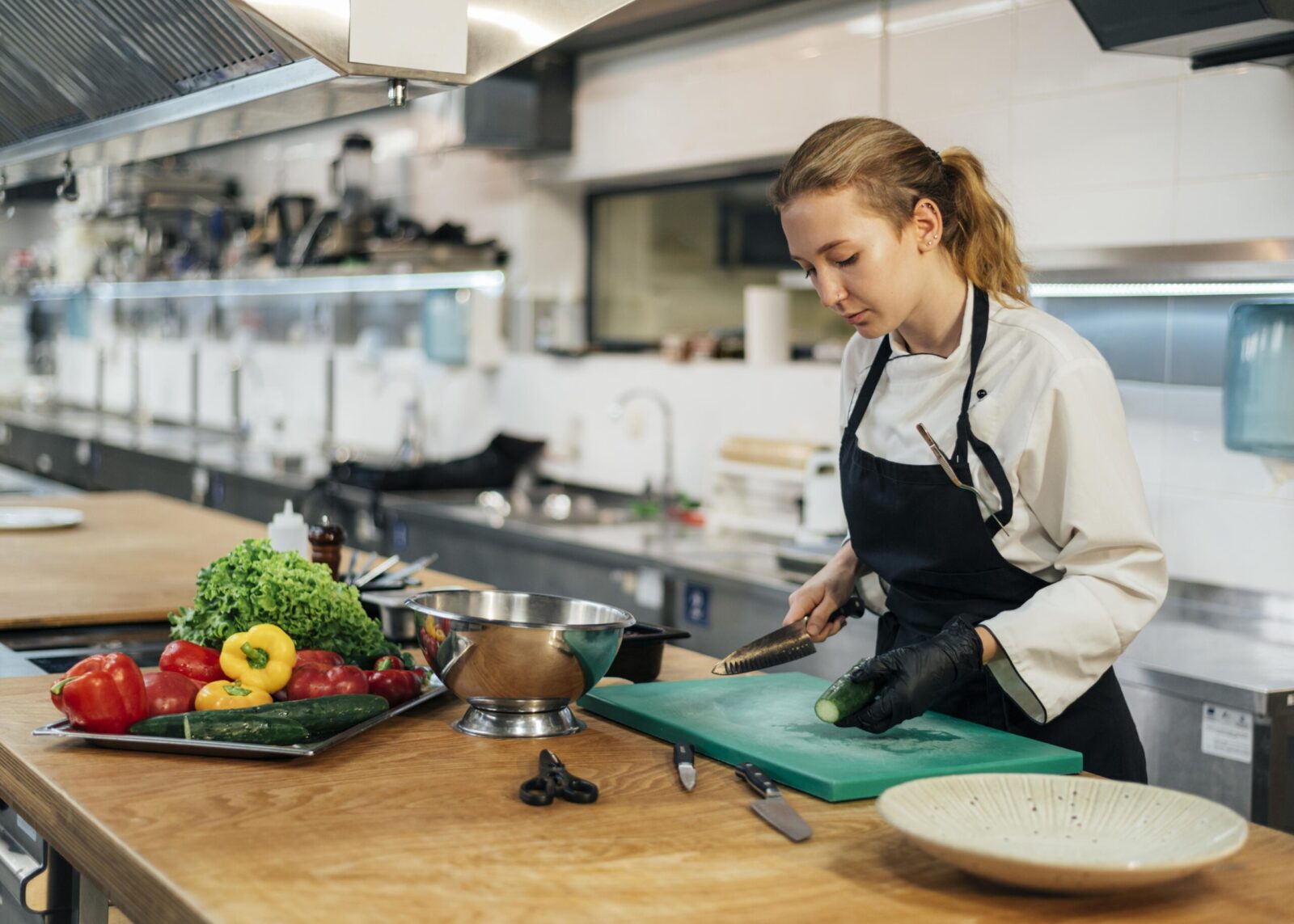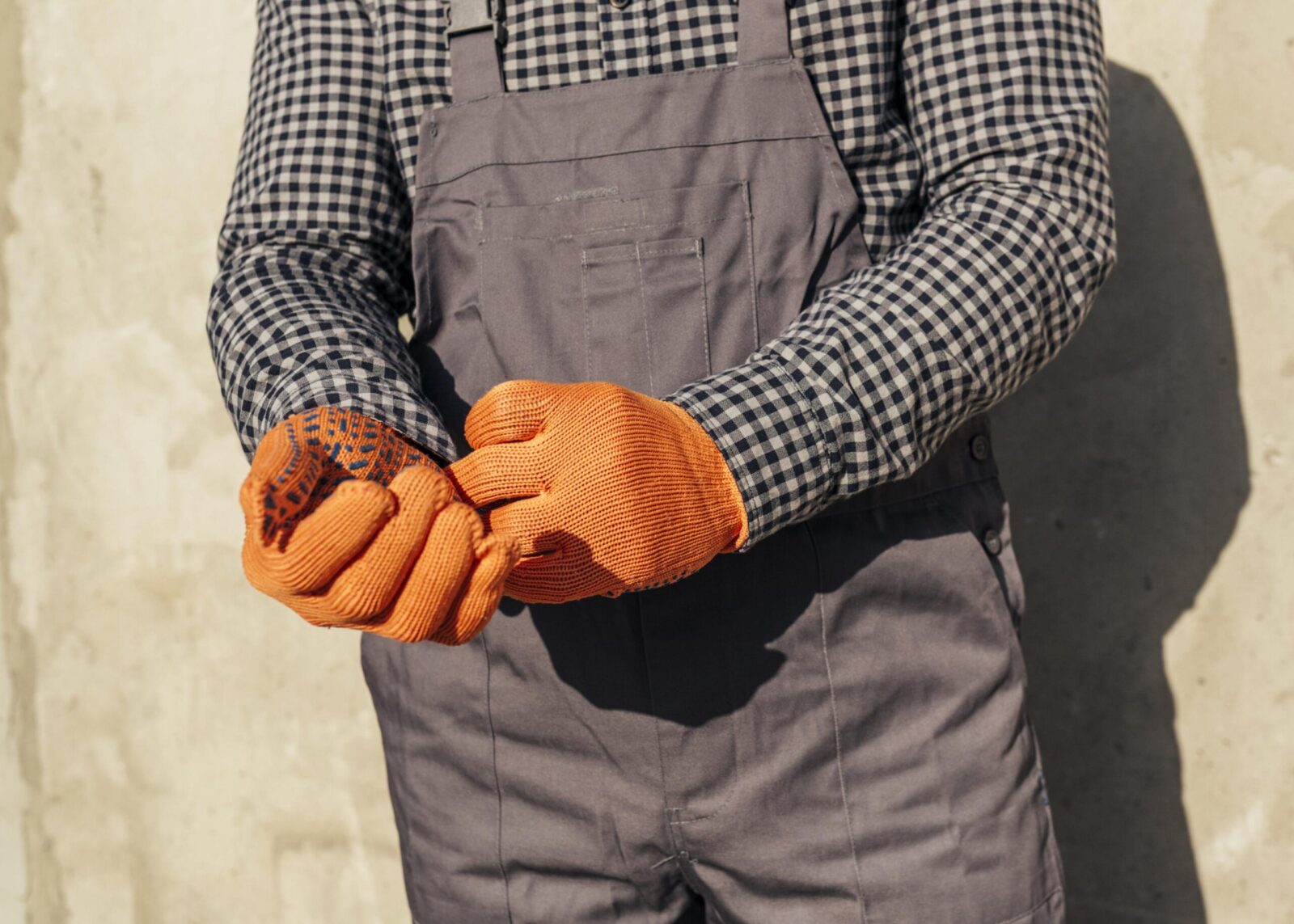
Arc Flash Gloves: Selecting the Right Protection
Choosing the right Arc Flash Gloves is key to ensuring your safety in high-risk environments like electrical maintenance or construction....

Get 20€ off on your first order!
In the food industry, food service gloves are mandatory for maintaining hygiene and preventing contamination. After all, the correct type of glove can help prevent the spread of harmful bacteria and other contaminants, and that’s why food workers must always wear gloves when handling food.
That being said, choosing the right type of food service glove can be a challenging task, as there are many different factors to take into account. In this guide, we’ll take a deep dive into the world of food service gloves, exploring the different types available, factors to consider when choosing the right glove type, and its proper use and care.
Here is what you’re about to read:

There are three main types of food service gloves: latex, nitrile, and vinyl.
Latex gloves are made from natural rubber and are known for their comfort and flexibility. They provide a high degree of tactile sensitivity, which makes them ideal for tasks that require precise movements, such as food preparation. However, latex gloves can cause allergies in some people, making them unsuitable for use in certain environments.
Nitrile gloves are made from a synthetic rubber that is more resistant to punctures and tears than latex gloves. They offer a higher level of protection against certain types of chemicals and are generally a good option for heavy-duty tasks. Nitrile gloves are also less likely to cause allergies and can be used in environments where latex gloves are not suitable.
Vinyl gloves are made from a synthetic material and are the most affordable option. They are comfortable to wear and offer a good level of protection against contaminants. However, they are also the least durable of the three types and are not suitable for use in heavy-duty tasks. You can read more about vinyl gloves in our blog post: Vinyl gloves: the affordable solution for industrial safety.
To choose the appropriate food service gloves for your settings and use cases, you should start by taking into account the particular tasks and situations in which they will be utilized. Depending on the intended use, some gloves may be more suitable than others and provide different levels of safeguarding.
Latex gloves are known for their comfort and flexibility, making them a good choice for tasks that require a high level of dexterity, such as food preparation and service. However, some workers may have latex allergies, so it’s important to consider this when selecting gloves for your staff. It’s also important to note that latex gloves are not recommended for tasks that involve handling fatty foods, as the fats can break down the material.
Nitrile gloves, on the other hand, are more resistant to punctures and tears than latex gloves, making them a good option for heavier tasks that require extra protection. They are also a better choice for tasks that involve handling certain chemicals or other hazardous materials. Nitrile gloves are also typically quite resistant to light punctures and tears, which makes them a good choice for handling raw meats and fatty foods. They are also available in different thicknesses to suit the task at hand.
However, always make sure to select the right level of cut protection to safeguard your workers’ hands against cuts and lacerations. You can read more about how to choose the best cut-protection gloves in our article: How To Choose Cut-Resistant Gloves – A Buyer’s Guide.
Vinyl gloves are the most affordable option, but they are also the least durable. They are a good choice for tasks that don’t require a high level of protection, such as handling dry or non-greasy foods. Nonetheless, they are not recommended for tasks that involve handling fatty foods or chemicals.
In addition to the type of gloves, it’s important to consider their thickness and texture. Thicker gloves offer better protection against contaminants, while gloves with texture provide added grip and control. When dealing with customers or handling ready-to-eat food, it’s important to choose gloves that are food-safe and comply with food safety regulations. Read more on how to choose the right PPE for your specific use case in our blog post: Keeping Workers Safe: how to select the right Personal Protective Equipment (PPE).
Heat-resistant gloves are necessary when handling hot items, such as pots and pans. These gloves are designed to withstand different degrees of high temperatures and are typically made of materials such as silicone or neoprene. Some cooking heat-resistant gloves are also designed to provide added grip, making it easier to handle slippery items.
Last but not least, it’s important to choose gloves that fit properly to ensure a comfortable and secure fit. Gloves that are too small can be uncomfortable and restrict movement, while gloves that are too large can be cumbersome and difficult to work with. The correct size of food service gloves will provide the necessary protection without compromising the worker’s ability to do their job effectively. You can read more about choosing the right glove size in our previous article: How To Choose The Right Work Glove Size.

Here are all your most frequently asked questions on food service gloves:

In restaurant kitchens and food manufacturing plants, using food service gloves is a must for hygiene and safety. The gloves, tailored to specific tasks, along with strict adherence to usage and care guidelines, will help you prevent contamination and ensure the well-being of your workers.
At Droppe, we understand the importance of hand protection in professional settings, and that’s why we offer a wide selection of food service gloves from trusted European suppliers.
Take a look at our comprehensive catalogue of food service gloves from Europe’s most trusted manufacturers, or get in touch with our experts for a free consultation.
Thank you! You've signed up for our newsletter.



















Choosing the right Arc Flash Gloves is key to ensuring your safety in high-risk environments like electrical maintenance or construction....

Choosing the right Rubber Insulating Gloves is essential for safety in electrical work, but with so many options, it can...

Are you looking for the right electrical insulating gloves to ensure your safety? This guide will help you understand the...

Choosing the right Arc Flash Gloves is key to ensuring your safety in high-risk environments like electrical maintenance or construction....

Choosing the right Rubber Insulating Gloves is essential for safety in electrical work, but with so many options, it can...

Are you looking for the right electrical insulating gloves to ensure your safety? This guide will help you understand the...
Get 20€ off on your first order!
Save 30% by buying directly from brands, and get an extra 10€ off orders over €100
Save 30% by buying directly form brands, and get an extra 10€ off orders over €100